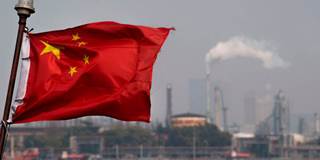For the past decade, China’s strategy for internationalizing the renminbi has involved greater reliance on the IMF’s Special Drawing Rights as an alternative international reserve currency. But the launch of renminbi-denominated oil trading this year suggests that China will now pursue de-dollarization head-on.
SYDNEY/ITHACA – It is now just ten months since China launched its oil futures contract, denominated in yuan (renminbi), on the Shanghai International Energy Exchange. In spite of forebodings and shrill alarms, the oil markets continue to function, and China’s futures contracts have established themselves and overtaken in volume terms the dollar-denominated oil futures traded in Singapore and Dubai.
Of course the volume of trades on the Shanghai INE still lags behind that of the Brent oil contracts traded in London and the West Texas Intermediate oil futures traded in New York. The Chinese oil futures contract is, however, being taken seriously by multinational commodity traders (like Glencore) and is priced in a manner that is comparable to the Brent and WTI indices. As we argue in The Asia-Pacific Journal, these results suggest that China’s oil futures could bring the renminbi to the core of global commodity markets.
The launch of the oil futures contract can be anticipated to widen the scope for renminbi-denominated commodity trading. As more of China’s oil imports come to be priced in its domestic currency, foreign suppliers will have more renminbi-denominated accounts with which they can purchase not only Chinese goods and services, but also Chinese government securities and bonds. This can be anticipated to strengthen Chinese capital markets and promote the renminbi’s internationalization – or at least the progressive de-dollarization of the oil market.

SYDNEY/ITHACA – It is now just ten months since China launched its oil futures contract, denominated in yuan (renminbi), on the Shanghai International Energy Exchange. In spite of forebodings and shrill alarms, the oil markets continue to function, and China’s futures contracts have established themselves and overtaken in volume terms the dollar-denominated oil futures traded in Singapore and Dubai.
Of course the volume of trades on the Shanghai INE still lags behind that of the Brent oil contracts traded in London and the West Texas Intermediate oil futures traded in New York. The Chinese oil futures contract is, however, being taken seriously by multinational commodity traders (like Glencore) and is priced in a manner that is comparable to the Brent and WTI indices. As we argue in The Asia-Pacific Journal, these results suggest that China’s oil futures could bring the renminbi to the core of global commodity markets.
The launch of the oil futures contract can be anticipated to widen the scope for renminbi-denominated commodity trading. As more of China’s oil imports come to be priced in its domestic currency, foreign suppliers will have more renminbi-denominated accounts with which they can purchase not only Chinese goods and services, but also Chinese government securities and bonds. This can be anticipated to strengthen Chinese capital markets and promote the renminbi’s internationalization – or at least the progressive de-dollarization of the oil market.